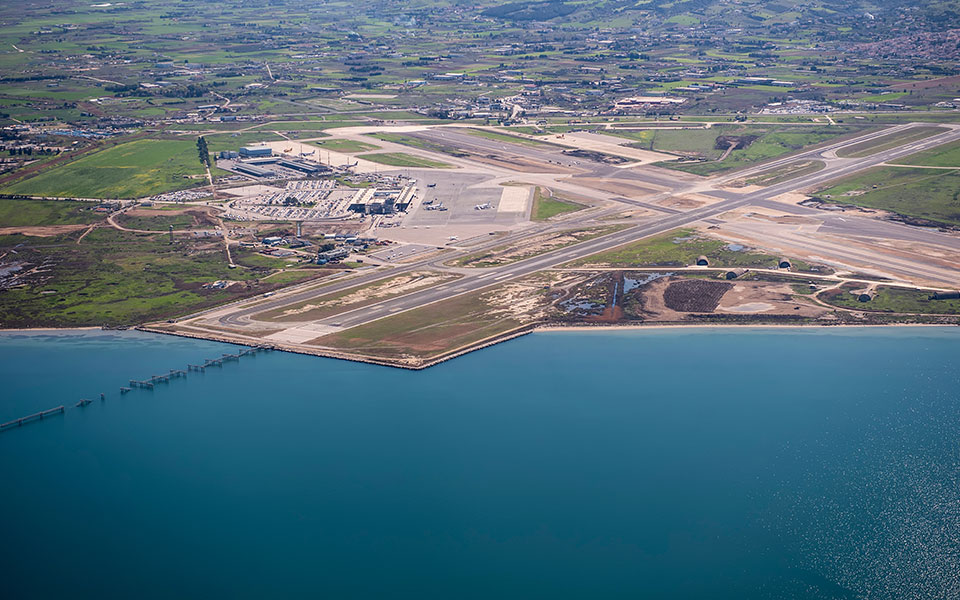By Ilias Bellos
A year after Fraport Greece took over 14 of the country’s regional airports, the German-Greek consortium is still struggling to meet the expectations of local communities and Greek tourism in general. As it enters its second year of airport operation, moreover, it will be unable to offer passengers any additional terminal space, as the works on the new buildings will not begin in earnest before the end of the summer.
At the same time, however, there are major changes taking place, albeit quietly: the number of passengers using the airports is growing by an annual rate of 10 percent; all studies, plans and licenses are in place; and, most importantly, 121 air companies are poised to connect the country’s 14 regional airports with 244 destinations in 44 other countries, the company told Kathimerini newspaper.
Although the main construction work is set to begin after September in order to avoid creating problems for passengers during the summer season, the aim is to have seven of the 14 airports ready next year. The head of Fraport Greece and of parent company Fraport AG, Stefan Schulte, recently said that the timetable provides for the airports of Zakynthos, Kavala and Hania to be ready before the summer of 2019, while those of Argostoli on Kefalonia, of Aktio, of Samos and of Skiathos after the summer of 2019. For 2020, Fraport is planning the completion of work at Mytilini airport on Lesvos, and at Kos, Rhodes and Santorini, while Fraport aims to complete work at the airports of Thessaloniki, Corfu and Mykonos by the summer of 2021.
The company’s four-year plan also provides for the creation of five new terminals in Thessaloniki, Kos, Corfu, Kefalonia and Mytilini, as well as much-needed development and upgrading projects for all the airports. These include increasing the number of check-in booths, screening and security points and luggage conveyor belts, while extensive upgrades will also be made in regard to airport safety, such renewing the tarmac on landing strips, installing HBS inline screening systems for luggage monitoring and constructing or renovating fire stations.
In total, the surface of the terminals in all 14 airports will expand by about 100,000 square meters, thereby considerably strengthening their capacity.
Fraport Greece took over the airports on April 11, 2017, and has activated an investment program of 415 million euros. The first step was taken late last year with work at the airports of Mykonos and Kefalonia. On Mykonos, one of the world’s most popular tourism destinations, Fraport completed the reconstruction of the local airport’s runway. The old runway, which had exceeded its official lifespan, was replaced with a new, stronger strip that will be able to support the Cycladic island airport’s passenger traffic for the next 20 years.
Kefalonia airport is also receiving upgrades, as Fraport is repairing its air-traffic control tower and the central terminal building of the Ionian island. Among the other interventions currently being implemented at the Anna Pollatou Airport in Argostoli is the cleaning of the main trench drains in the restricted-access area, as well as upgrading of the main runway, whose lifespan has also expired.
Another airport that has been getting special attention is that on the southeastern Aegean island of Kos. The runway has been upgraded, while construction on a new terminal is set to start. Once finished, it will cover a surface are of 23,106 square meters and replace the existing – and far smaller – building.
The next airport to undergo an infrastructure facelift will be that of Zakynthos in the Ionian Sea. Works at the Dionysios Solomos Airport will begin in the coming weeks and will mainly concern its modernization. This is set to include the expansion and reorganization of the terminal building, an increase in parking spaces and the upgrading of the biological waste treatment unit. A new fire station will also be constructed and a state-of-the-art system for managing and screening luggage will be installed.
According the timetable of Fraport Greece – which paid 1.23 billion euros to obtain control of the 14 airports and has already launched an investment of another 415 million euros – all of the work being planned will have been completed by 2021.
This article was initially published by ekathimerini.com











